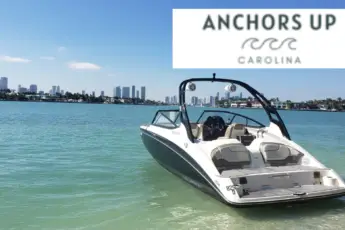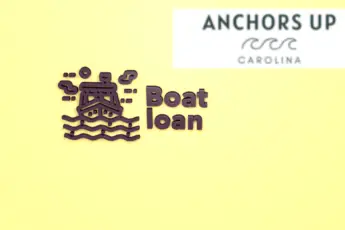No matter if you’re an experienced boater or inexperienced boater one of the more challenging parts of operation is retrieving the anchor. I, as a former captain, have retrieved anchors aboard everything from dinghies to yachts. While the mechanics involved in pulling a yacht anchor is more complex, the process in regards to operation is the same. Without a doubt, boat positioning is critical. Here are the most informative tips on where to position your boat when retrieving anchor.
What To Avoid When Retrieving A Boat Anchor
Before understanding where to position a boat when pulling an anchor, it is important to know the dangers. Unquestionably, things can go wrong when pulling anchors. Not only is equipment at risk of damage, but people are prone to injury.
Never Secure The Line To The Stern
One of the biggest mistakes made when pulling an anchor is connecting the line to the stern. Never connect the anchor line to the stern, as you are at risk of swamping the vessel.
When forward throttle is applied, the stern dips because the anchor is embedded in the seafloor. The boat, especially in rough seas, is prone to excessive water inundation. As a result, the boat becomes unstable and capsizes.
Avoid Running The Boat Over The Anchor Line
When retrieving an anchor, it’s good practice for the boat’s operator to assist by inching forward toward the anchor. The forward motion allows the person to pull the line with ease compared to fighting currents and wind.
However, I have seen people apply too much forward momentum and thus creating a belly in the anchor line. Remember, the person retrieving can’t pull the line aboard nearly as fast as a boat propelled through the water. For this reason, the operator strikes the anchor line, wraps it in the prop, and stalls the engine.
I can tell you first hand that unwrapping a line from the prop requires time. The time it takes to get your motor free and running puts you and your passengers at risk of drifting aground or striking an object.
Keep Your Hand And Feet Clear
Fortunately, my hands or feet have never become entangled in an anchor line. However, it is not a good situation when it does occur. Importantly, you never know when the anchor line will become taught during the retrieval process. In some situations, you will be unable to connect the line to a cleat before it starts paying back out. With that being said, this is the reason hands and feet become wrapped in anchor lines.
Don’t become a victim of being dragged over the side of the boat because of an entanglement. Keep your hands and feet clear of the line.
Tips For Positioning Your Boat When Retrieving An Anchor
The next time you’re ready to retrieve your boat anchor use the following tips as the operator. I have used these techniques in a variety of conditions, including heavy rain, stiff wind, and strong currents. For this reason, I know that it provides the highest level of safety for your passengers.
Start The Boat Before Retrieving An Anchor
Unquestionably, the engine must always be started before a person touches the anchor line for retrieval.
The last thing you want to do is have a freely drifting boat as a result of a freed anchor before the engine is running. I often anchor in tight to the beach and therefore lift the engine. Remember, don’t turn the key until the outboard motor is lowered. The scream of the engine is sure to get you and your passengers to jump out of their seats.
With the engine running, the person who is handling the anchor line is free to begin the retrieval process.
Bump The Boat Forward
As mentioned above, it is not uncommon for boat operators to apply excessive power and entangle the anchor line in the prop.
Bumping a boat in and out of gear is a technique that I prefer. First off, vessels carry momentum; therefore, it will be challenging to slow or stop the boat if you’re at risk of overrunning the line.
Secondly, as mentioned, the forward moment, even when out of gear, will assist the person pulling the anchor line.
I suggest bumping the boat in and out of gear into the current or wind until the anchor and the line are perpendicular to the vessel. Once perpendicular, reconnect the anchor line to the bow cleat.
Position The Vessel So The Anchor Line Is Vertical
As mentioned above, during the retrieval process, the anchor line should become vertical as compared to extended out at an angle.
Importantly, the person pulling the anchor line must be cautious of injuring hands. Unfortunately, as the line comes tight, people pinch fingers between the line and the hull. With that being said, I recommend securing the anchor line to the cleat once it is perpendicular to the vessel.
Once the anchor line is perpendicular and secured to the cleat, you have the leverage to pop the anchor free from the seafloor. Once the anchor is freed, remove the line from the cleat and retrieve it.
Now You Know Where To Position Your Boat When Retrieving Anchor
I’ll admit removing an embedded anchor is tricky. However, by following these boat positioning tips, you will remove the anchor safely and quickly. Again, I have pulled anchors free on everything from yachts to dinghies. Just remember, do not rush the process. Rushing the process results in an injury or entangled motor.







